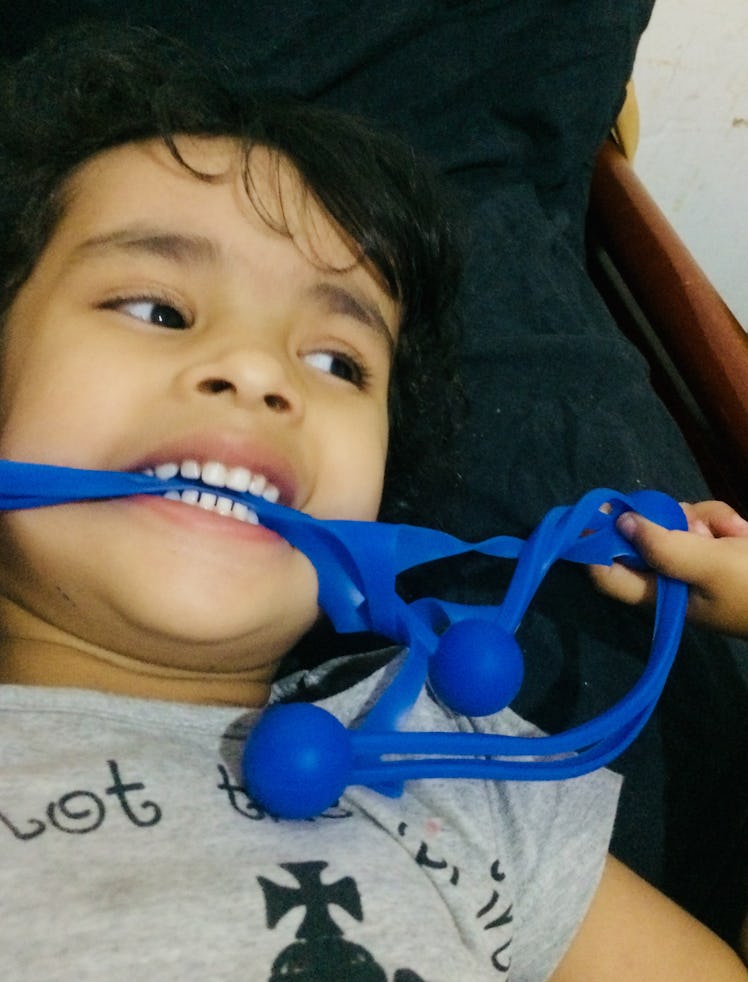How To Keep Kids From Putting Stuff In Their Mouths
Habits are hard to break, even those learned as babies. Patience and consistency can help redirect a child’s biting and behavior.

Biting, gnawing, and mouthing are fairly common behaviors for babies and toddlers. Babies naturally explore their environment with their mouths (while working on bite coordination), and toddlers struggle to get out of the habit. But as kids enter preschool, the ones that still use their mouth for activities beyond talking and eating start to get in trouble. Still, many treat the world like a private buffet. What can parents do to discourage this behavior?
For starters, parents should figure out exactly what is going on, says Roseanne Lesack, Ph.D., director of the child psychology unit at Nova Southeastern University. Older preschoolers have the verbal skills to give parents clues to the source of this behavior, whether it’s social anxiety or a tender mouth. With younger kids, it may be a little trickier.
“The first thing is to make sure their mouth is healthy: Are they super thirsty? Are they sick? Are they teething?” says Lesack. “There could be a legitimate reason, and if there is a legitimate reason, address it. “
Second- or third-year molars are real and just as aggravating to preschoolers as they are to babies. But chewing on toys, TV remotes, and other preschoolers are not reasonable methods of relief. There are sensory chew toys for older children available, but keeping them clean and available to a child who needs them can be tricky.
“You have to be present. You have to continually take the object out of their hands,” Lesack says. “Remind them that they are old enough to play without putting the toys in their mouth. And if they do put it back in their mouth, you can take the toy away and tell them they can try again in a few minutes. If they start chewing on it again, I would take it away for the rest of that play session.”
Each time a toy is introduced or reintroduced, it’s important to remind the kid that toys don’t go in their mouth. Parents need to model what appropriate play looks like and praise the child when they play that way. That can help redirect the attention and behavior of a three-year-old with some sore gums, but what about the three-year-old chewing on toys because it means mom or dad pays more attention to them? Well, in that case, sit down and play.
“If they are doing it for attention,” says Lesack, “you should be sitting down and playing with them, and modeling for them, and showing them how to play appropriately and giving them a lot of attention.”
Yes, days are busy, and it’s great once a child is old enough to entertain themselves for short periods. But they still want and need the attention of their parents. Chewers may simply need more attention than most — and the chewing may be their weird way of asking for more of your time.
“All they want you to do is sit down and give them some snuggles and cuddles and some playtime and some one-on-one time,” says Lesack. “So make sure you sit down and play with your kid.”
This article was originally published on